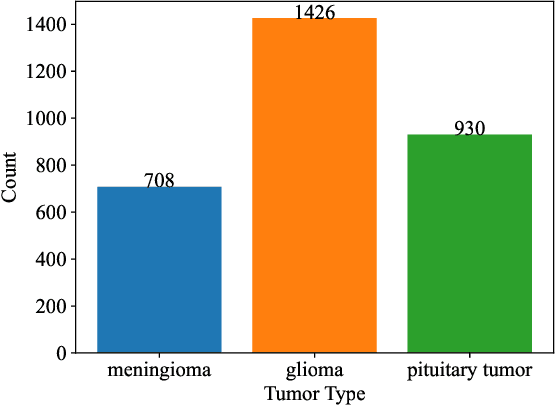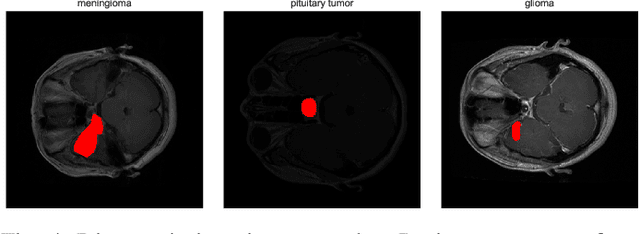Muhammad Al-Zafar Khan
Achieving Optimal Tissue Repair Through MARL with Reward Shaping and Curriculum Learning
Apr 14, 2025Abstract:In this paper, we present a multi-agent reinforcement learning (MARL) framework for optimizing tissue repair processes using engineered biological agents. Our approach integrates: (1) stochastic reaction-diffusion systems modeling molecular signaling, (2) neural-like electrochemical communication with Hebbian plasticity, and (3) a biologically informed reward function combining chemical gradient tracking, neural synchronization, and robust penalties. A curriculum learning scheme guides the agent through progressively complex repair scenarios. In silico experiments demonstrate emergent repair strategies, including dynamic secretion control and spatial coordination.
Optimal Path Planning and Cost Minimization for a Drone Delivery System Via Model Predictive Control
Mar 25, 2025Abstract:In this study, we formulate the drone delivery problem as a control problem and solve it using Model Predictive Control. Two experiments are performed: The first is on a less challenging grid world environment with lower dimensionality, and the second is with a higher dimensionality and added complexity. The MPC method was benchmarked against three popular Multi-Agent Reinforcement Learning (MARL): Independent $Q$-Learning (IQL), Joint Action Learners (JAL), and Value-Decomposition Networks (VDN). It was shown that the MPC method solved the problem quicker and required fewer optimal numbers of drones to achieve a minimized cost and navigate the optimal path.
Predicting Water Quality using Quantum Machine Learning: The Case of the Umgeni Catchment (U20A) Study Region
Nov 27, 2024Abstract:In this study, we consider a real-world application of QML techniques to study water quality in the U20A region in Durban, South Africa. Specifically, we applied the quantum support vector classifier (QSVC) and quantum neural network (QNN), and we showed that the QSVC is easier to implement and yields a higher accuracy. The QSVC models were applied for three kernels: Linear, polynomial, and radial basis function (RBF), and it was shown that the polynomial and RBF kernels had exactly the same performance. The QNN model was applied using different optimizers, learning rates, noise on the circuit components, and weight initializations were considered, but the QNN persistently ran into the dead neuron problem. Thus, the QNN was compared only by accraucy and loss, and it was shown that with the Adam optimizer, the model has the best performance, however, still less than the QSVC.
Cybercrime Prediction via Geographically Weighted Learning
Nov 07, 2024



Abstract:Inspired by the success of Geographically Weighted Regression and its accounting for spatial variations, we propose GeogGNN -- A graph neural network model that accounts for geographical latitude and longitudinal points. Using a synthetically generated dataset, we apply the algorithm for a 4-class classification problem in cybersecurity with seemingly realistic geographic coordinates centered in the Gulf Cooperation Council region. We demonstrate that it has higher accuracy than standard neural networks and convolutional neural networks that treat the coordinates as features. Encouraged by the speed-up in model accuracy by the GeogGNN model, we provide a general mathematical result that demonstrates that a geometrically weighted neural network will, in principle, always display higher accuracy in the classification of spatially dependent data by making use of spatial continuity and local averaging features.
Predicting Coronary Heart Disease Using a Suite of Machine Learning Models
Sep 21, 2024



Abstract:Coronary Heart Disease affects millions of people worldwide and is a well-studied area of healthcare. There are many viable and accurate methods for the diagnosis and prediction of heart disease, but they have limiting points such as invasiveness, late detection, or cost. Supervised learning via machine learning algorithms presents a low-cost (computationally speaking), non-invasive solution that can be a precursor for early diagnosis. In this study, we applied several well-known methods and benchmarked their performance against each other. It was found that Random Forest with oversampling of the predictor variable produced the highest accuracy of 84%.
Deep Learning Under Siege: Identifying Security Vulnerabilities and Risk Mitigation Strategies
Sep 14, 2024
Abstract:With the rise in the wholesale adoption of Deep Learning (DL) models in nearly all aspects of society, a unique set of challenges is imposed. Primarily centered around the architectures of these models, these risks pose a significant challenge, and addressing these challenges is key to their successful implementation and usage in the future. In this research, we present the security challenges associated with the current DL models deployed into production, as well as anticipate the challenges of future DL technologies based on the advancements in computing, AI, and hardware technologies. In addition, we propose risk mitigation techniques to inhibit these challenges and provide metrical evaluations to measure the effectiveness of these metrics.
* 10 pages, 1 table, 6 equations/metrics
FedQNN: Federated Learning using Quantum Neural Networks
Mar 16, 2024



Abstract:In this study, we explore the innovative domain of Quantum Federated Learning (QFL) as a framework for training Quantum Machine Learning (QML) models via distributed networks. Conventional machine learning models frequently grapple with issues about data privacy and the exposure of sensitive information. Our proposed Federated Quantum Neural Network (FedQNN) framework emerges as a cutting-edge solution, integrating the singular characteristics of QML with the principles of classical federated learning. This work thoroughly investigates QFL, underscoring its capability to secure data handling in a distributed environment and facilitate cooperative learning without direct data sharing. Our research corroborates the concept through experiments across varied datasets, including genomics and healthcare, thereby validating the versatility and efficacy of our FedQNN framework. The results consistently exceed 86% accuracy across three distinct datasets, proving its suitability for conducting various QML tasks. Our research not only identifies the limitations of classical paradigms but also presents a novel framework to propel the field of QML into a new era of secure and collaborative innovation.
Brain Tumor Diagnosis Using Quantum Convolutional Neural Networks
Jan 30, 2024



Abstract:Integrating Quantum Convolutional Neural Networks (QCNNs) into medical diagnostics represents a transformative advancement in the classification of brain tumors. This research details a high-precision design and execution of a QCNN model specifically tailored to identify and classify brain cancer images. Our proposed QCNN architecture and algorithm have achieved an exceptional classification accuracy of 99.67%, demonstrating the model's potential as a powerful tool for clinical applications. The remarkable performance of our model underscores its capability to facilitate rapid and reliable brain tumor diagnoses, potentially streamlining the decision-making process in treatment planning. These findings strongly support the further investigation and application of quantum computing and quantum machine learning methodologies in medical imaging, suggesting a future where quantum-enhanced diagnostics could significantly elevate the standard of patient care and treatment outcomes.
Financial Fraud Detection using Quantum Graph Neural Networks
Sep 03, 2023Abstract:Financial fraud detection is essential for preventing significant financial losses and maintaining the reputation of financial institutions. However, conventional methods of detecting financial fraud have limited effectiveness, necessitating the need for new approaches to improve detection rates. In this paper, we propose a novel approach for detecting financial fraud using Quantum Graph Neural Networks (QGNNs). QGNNs are a type of neural network that can process graph-structured data and leverage the power of Quantum Computing (QC) to perform computations more efficiently than classical neural networks. Our approach uses Variational Quantum Circuits (VQC) to enhance the performance of the QGNN. In order to evaluate the efficiency of our proposed method, we compared the performance of QGNNs to Classical Graph Neural Networks using a real-world financial fraud detection dataset. The results of our experiments showed that QGNNs achieved an AUC of $0.85$, which outperformed classical GNNs. Our research highlights the potential of QGNNs and suggests that QGNNs are a promising new approach for improving financial fraud detection.
Quantum State Tomography using Quantum Machine Learning
Aug 20, 2023Abstract:Quantum State Tomography (QST) is a fundamental technique in Quantum Information Processing (QIP) for reconstructing unknown quantum states. However, the conventional QST methods are limited by the number of measurements required, which makes them impractical for large-scale quantum systems. To overcome this challenge, we propose the integration of Quantum Machine Learning (QML) techniques to enhance the efficiency of QST. In this paper, we conduct a comprehensive investigation into various approaches for QST, encompassing both classical and quantum methodologies; We also implement different QML approaches for QST and demonstrate their effectiveness on various simulated and experimental quantum systems, including multi-qubit networks. Our results show that our QML-based QST approach can achieve high fidelity (98%) with significantly fewer measurements than conventional methods, making it a promising tool for practical QIP applications.
 Add to Chrome
Add to Chrome Add to Firefox
Add to Firefox Add to Edge
Add to Edge